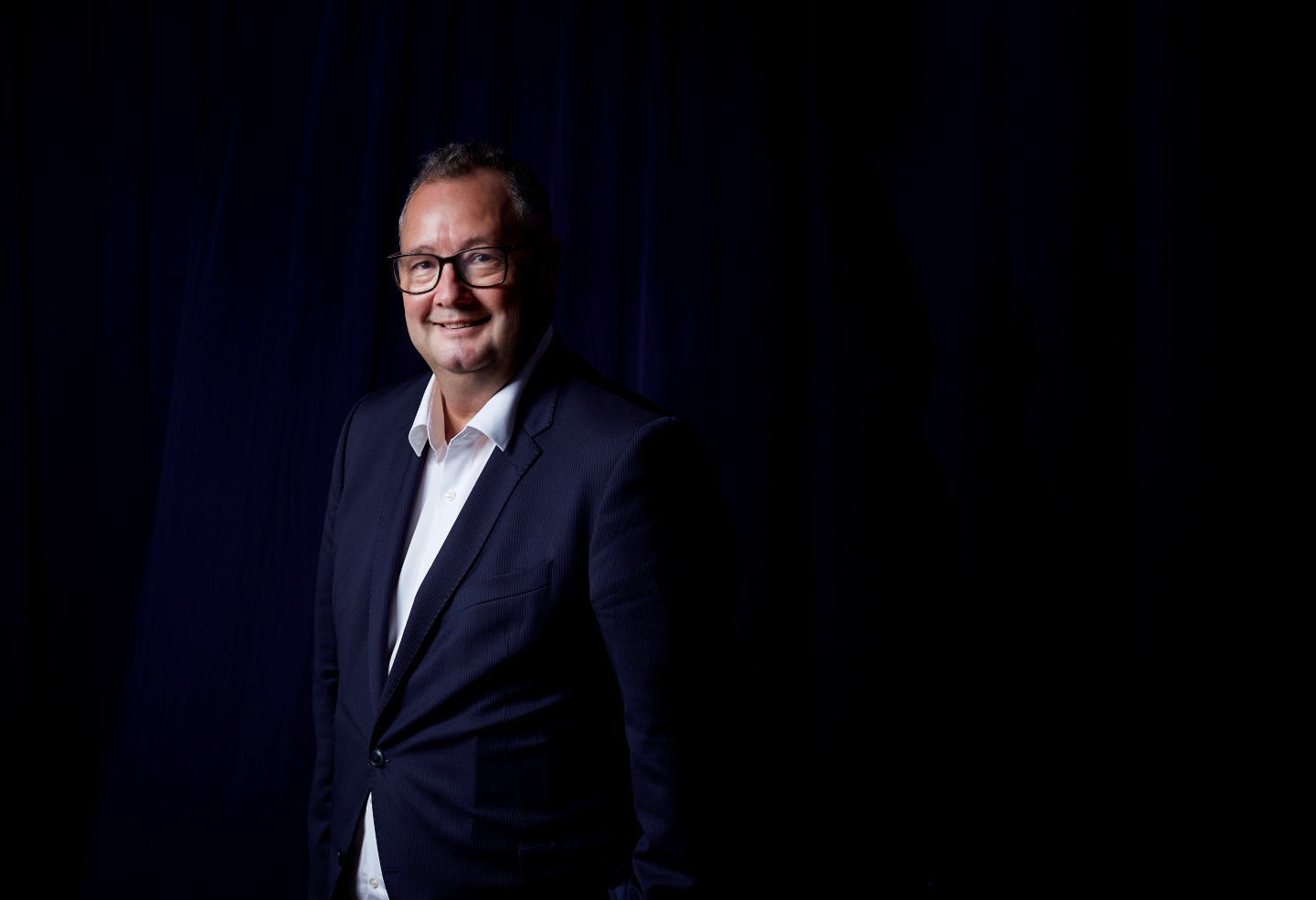
Giron: Conviviality is a concept that unlocks the magic of human connection and has been at the heart of the way we do things (Photo: SooPhye)
Propelled by the export of tin and rubber and expedited by the pivotal opening of the Suez Canal, which significantly shortened the maritime route between Europe and Asia, trade in Malaya burgeoned to new heights at the end of the 19th century.
It was around this time that the first shipments of Martell to the country — arranged by JM Goldenberg & Co, a luxury goods retailer — arrived at the port of Penang. Cognac was a popular digestif among the British while Chinese magnates considered it their social lubricant of choice for talking business. Soon, Martell was stocked in every prestigious hotel, bar and restaurant in town. And the same is true, even a whole century later.
To celebrate the French cognac house’s 130th anniversary in Malaysia, a number of special releases, limited editions and exclusive events have been planned for 2024. Fans and connoisseurs who visited the month-long pop-up exhibition at Pavilion Bukit Jalil in Kuala Lumpur last December would have had a taste of what is to come.
On display were the 130 Years in Malaysia Martell Cordon Bleu limited edition designed by Sarawakian textile artist Marcos Kueh, the L’Or de Jean Martell Zodiac Edition — Assemblage du Dragon and the one-of-a-kind Les Remarquables de Martell — Edition Laurentine Perilhou, dubbed the world’s most expensive cognac at €1 million (RM5.1 million). The Les Remarquables de Martell is a new collection that pairs an extremely rare cognac with an exquisite objet d’art decanter. This first edition features a prestigious 70-year-old blend from Martell’s private reserve in a dame-jeanne fashioned with gold thread by renowned French macramé designer Laurentine Périlhou, whose past collaborators include Hermès, JP Gaultier, Lanvin and Balmain.
130_years_in_malaysia_pop_up_store_9.jpg

“Malaysia is the second-largest global cognac market after China,” the affable César Giron, chairman and CEO of Martell Mumm Perrier-Jouët, tells Options at a lavish anniversary soirée held in KL last December. “When you have hundreds of years [history] in a country, it means the brand has been permanently recruiting. We have very loyal customers. The key to a successful business is to continuously recruit new consumers by adapting to evolving tastes and styles.”
Martell’s cognac has been served at some of the world’s most momentous events, including the coronation of King George V of England, the signing of the WWI armistice in Compiègne, France, and the grand wedding reception of Prince Rainier III of Monaco and film star Grace Kelly. But even with its storied 300-year history, it is far from being antiquated, nor a drink only grandpa can appreciate. In fact, Giron says Martell’s discerning clients are young.
“Nowadays, people don’t want to just drink. They want to know what they are drinking. They want to know what’s inside — the characteristics, the differences. Why should I drink this instead of that? I was talking to some very young, high-income individuals in China and was amazed at how well they were able to perceive the distinctions between cognacs derived from different terroirs,” he says.
Technology has made it incredibly easy for the modern consumer to seek out information. So, good on Martell for tapping the excellent opportunity to offer a new line of products as a response to its clientele’s growing curiosity.
martell_single_cru_.jpg
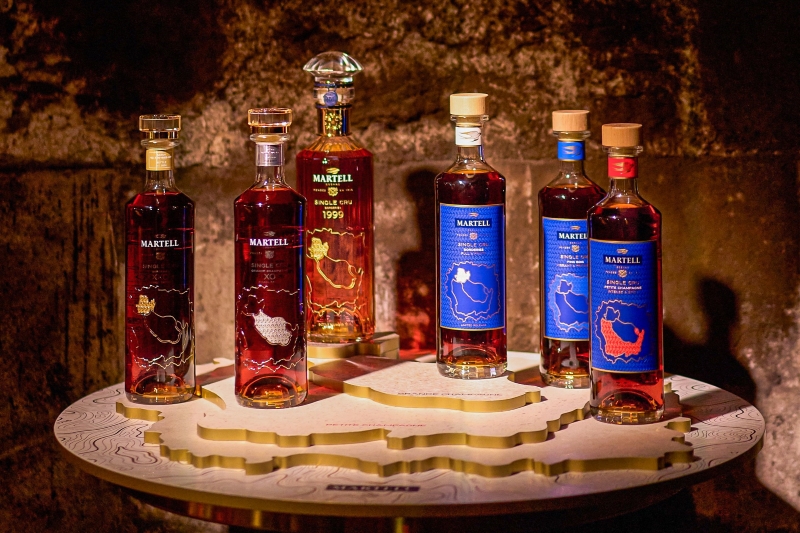
Talk of the terroir
When the maison’s founder Jean Martell left his native Jersey, in the Channel Islands, to devote himself to developing the art of cognac in France, he travelled the length and breadth of the region in search of the finest eau-de-vie, or “water of life” in French. Eau-de-vie is a clear brandy made from white wine that has been distilled twice. Legally, it is considered a cognac after it has been aged aged for at least two years. For Martell, however, the stamp of approval is given only after blending. This final process, which marries a myriad of eaux-de-vie, is vital to ensuring the consistency of each product every year.
The Cognac region itself is divided into six vineyard areas, or crus, which enjoy a good amount of sunlight and mild ocean climate, as it is near the Atlantic. The environmental conditions are optimal for the growth of the predominant grape variety, Ugni Blanc, but it is also the unique terroir and soil composition that give each spirit its distinct personality.
The largest and most prolific cru of the six, Fins Bois, with its reddish clay and limestone soil, is known for its soft, light and airy eaux-de-vie, whereas the greyish, chalky soil of Petite Champagne produces a more structured and dynamic spirit. Grande Champagne’s chalky and limestone soil yields an aromatic, rich and powerful brandy, while the Borderies cru, the smallest and most beloved — the youngest child, as the Martell blenders call it — produces the most delicate and elegant eau-de-vie, with pronounced aromas of flowers and candied fruit.
During an exclusive press trip to Cognac last June, the maison unveiled the Martell Single Cru, a landmark collection in which every cognac is crafted with eau-de-vie sourced from a single terroir. Cellar master Christophe Valtaud conducts a vigorous selection process to single out eaux-de-vie that give the most precise and authentic expressions of their lands. For context, fewer than 400 of 11,000 eaux-de-vie from the Martell reserves are retained, which further demonstrates the rarity of the collection.
“The Single Cru is a strategic move,” Giron explains. “In Cognac, because the vines are different each year, we need to blend many cognacs to achieve the same organic profile. If we miss an ingredient one year, we have another in the reserve that does not affect the overall profile to replace it.”
He likens it to an orchestra, where multiple talents come together in harmony. The Single Cru is, however, a solo performance. “We wanted to show that the terroir holds an incredible role in our products.”
martell_single_cru_launch.jpg
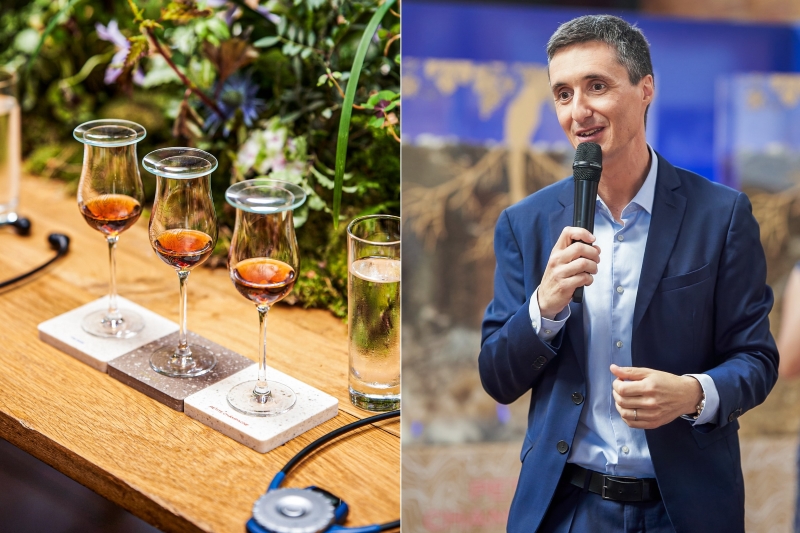
Levelling up
The Single Cru is educational in many ways. There are three levels to it, starting with the Discovery Edition. The Level One triad is an invitation to explore the main crus of the Cognac region — Fins Bois, Petite Champagne and Borderies.
Fins Bois invigorates the senses with a lush and vivacious character. On the nose, fresh citrus notes are accompanied by subtle hints of vanilla, but on the palate, vibrant and juicy fruits coat the sensors. Petite Champagne is intense and spicy, with prominent notes of cinnamon, stewed fruits and vanilla. The bold spices give it a good lift and a longer finish. By contrast, Borderies is a gentle caress of white blossoms and silky fruits — think apricot, mangoes and dates. Ethereal, floral and sweet, the smallest cru of the lot also exhibits mild spices and earthy notes at the back.
“Level Two goes one step further by showing people the importance of ageing,” Giron says. For the Aged Edition, the eaux-de-vie from Borderies and Grande Champagne have benefited from many years in fine-grained oak barrels to develop new organoleptic properties. In the case of the Single Cru XO Grande Champagne, the cognac is enriched with notes of nuts and dried fruit, as well as overtones of wood. As for the Single Cru XXO Borderies, it is blended from eaux-de-vie that have attained their aromatic plenitude, resulting in a rich and full liquid, bursting with luscious fruity notes.
The exploration of maison Martell’s terroirs reaches its culmination with the Vintage Edition. Valtaud selected a remarkable Borderies eau-de-vie produced in 1999 from the Gallienne estate, the emblematic vineyard of the Martell family.
It was a challenging year in terms of climate, resulting in lower harvests, but it increased the quality and rarity of the grapes. After distillation in 2000, the eau-de-vie was transferred into fine-grained oak barrels and aged for 23 years. This represents the purest expression of Borderies in that particular year. The sweet nectar is soft and jammy, complemented by a union of candied fruit, linden blossom and vibrant citrus. It is extremely smooth on the palate and the epitome of the Single Cru experience.
The Single Cru collection is available only in Asia.
“It is where the brand has the highest equity and demand,” Giron notes. “We have limited stock of this, so we decided to focus on the core markets.”
The Aged editions will be enriched every year and released in small batches in individually numbered bottles; and the precious Vintage will be available in exceptionally limited quantities — representing the very last barrels of the rare eaux-de-vie — for collectors.
martell_single_cru_cognac.jpg
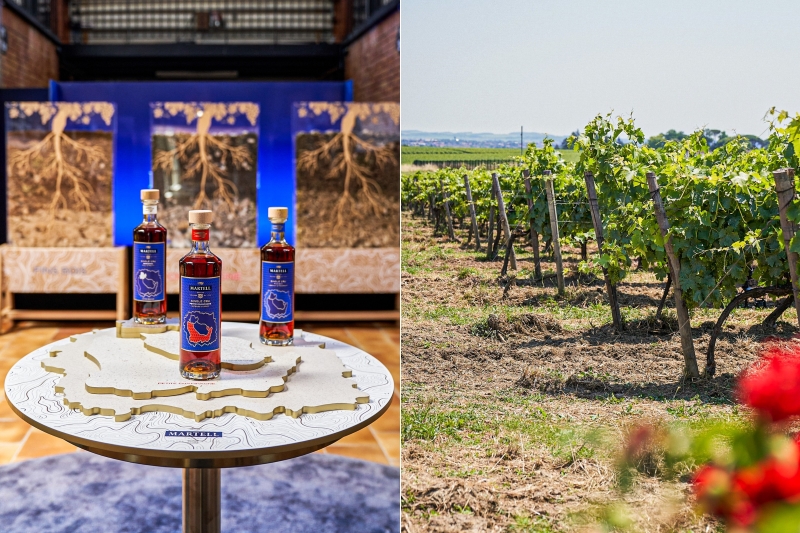
Sustainable viticulture
Erratic climate conditions are only some of the environmental upheavals the industry faces today. The cognac house has long been committed to implementing better practices and, over the years, accelerated its innovations in favour of ecological transition.
“When you’re drinking a bottle today, it was produced many years ago. Therefore, even if climate change happens tomorrow, we still have stock. It will maybe take 10 or 20 years before we feel the pinch of this lack or change in quality,” Giron explains. “We are investing a lot in what we call ‘regenerative agriculture’. It’s a principle that you need to take care of the soil, so that it takes care of the vines. We are now at the edge of the practice and need to convince winegrowers and partners to do the same.”
Since 2016, all 450ha of Martell’s domain have been free of carcinogens, mutagens and reprotoxic products and endocrine disruptors. Zero herbicide use was achieved in 2019. The sustainable viticulture approach focuses on key areas of soil life, vine nutrition and health, the biodiversity of the landscape and environment, as well as the men and women who work there. The soil’s microbiology is studied and analysed.
“We’re capturing a lot of data on the vines to know which agroecological practices are best and most sustainable,” Giron says.
Robot technology, such as a self-propelled weeding machine, has also been incorporated to take over the dirtier work, while the research and development on low-carbon distillation technologies is ongoing with the Chalvignac Group.
“Today, your environmental sensitivity is much higher than that of 10 or 20 years ago, so you have to imagine what it’s going to be like in the future. In 20 years, people will judge my practices today. On that day, I will tell them the story of what we’ve done to get there. That’s very important to remember — consumers will judge our practice today with the sensitivity of tomorrow.”
_s1a5401a.jpg
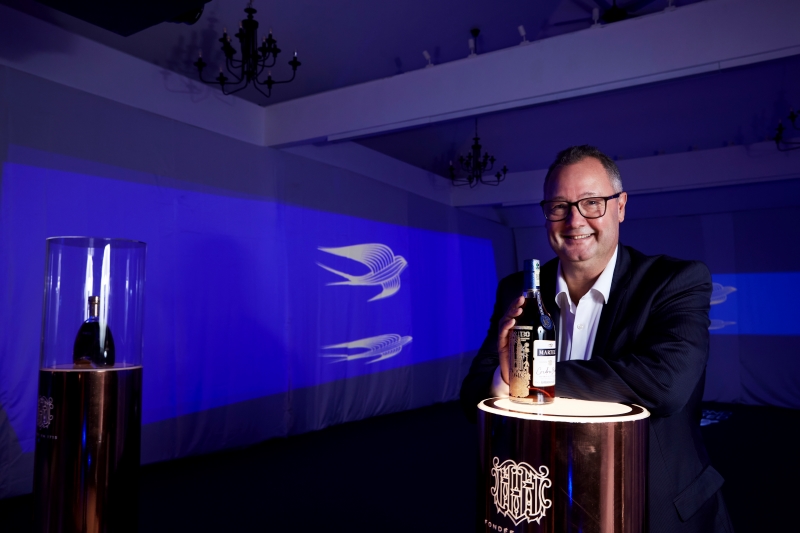
Business + family
In 1975, Pernod Fils and the Ricard family, two of the largest aniseed aperitif producers in France and fierce rivals, joined forces in a merger that marked one of the most defining moments in industry history. It would go on to spearhead a series of pivotal events that would make it the titan it is today.
A serial acquisitor, Pernod Ricard was most bullish in the early 2000s, buying over Seagram (Chivas Regal, The Glenlivet, Royal Salute and Martell), Allied Domecq (Mumm, Perrier-Jouët, Ballantine’s, Malibu and Beefeater) and Vin & Sprit (Absolut Vodka). The group is still largely run by the Ricard family and currently helmed by the third generation, which includes Giron, a grandson of co-founder Paul Ricard.
“I am blessed to be born to a family led by an incredible man,” Giron says. “I was blessed to have from him a vision that was unlimited — that you never start a race to be No 2. He gave us a winning culture and advised us to make a new friend every day. Conviviality is a concept that unlocks the magic of human connection and has been at the heart of the way we do things. It is the most vibrant stuff in the world. You can go anywhere and meet people of any age and origin, and you will see conviviality.”
After graduating from Emlyon Business School (formerly the École Supérieure de Commerce de Lyon), Giron joined the company in 1987 and has been there ever since. Having spent his entire career and almost 40 years at Pernod Ricard, he says: “One of the most important business lessons I’ve learnt is that if you think you know everything, you’re wrong.”
In terms of leadership, he says: “I’ve always thought that when you have a conversation with somebody with incredible leadership, you feel more intelligent than before. The way this person answers you and the way he looks at things can make you feel bigger and a better person.”
Giron spends the bulk of his time travelling — “I’m based in France, but my wife would say I’m based on planes,” he jokes — making sure he is up to date with the cognac and champagne producers and markets under his purview. “I love meeting and talking to new people and, thanks to my job, I always have.”
Flitting around the world has also opened up new perspectives.
“In Europe, we tend to judge things. You either like or dislike it and then you defend your position. In Asia, you have something fantastic, which is when you see something that shocks you, and you ask why? I think that’s beautiful.”
It is in the same vein that the Single Cru was produced in the first place.
“I love seeing the journey of a new consumer entering into the cognac category and Martell brand,” he says.
While the official release dates for the new line-up are up in the air, the Single Cru may be available in Malaysia sooner than you think.
This article first appeared on Mar 11, 2023 in The Edge Malaysia.


